© 2024 Tales from Outside the Classroom ● All Rights Reserved
Part Part Whole with Addition and Subtraction
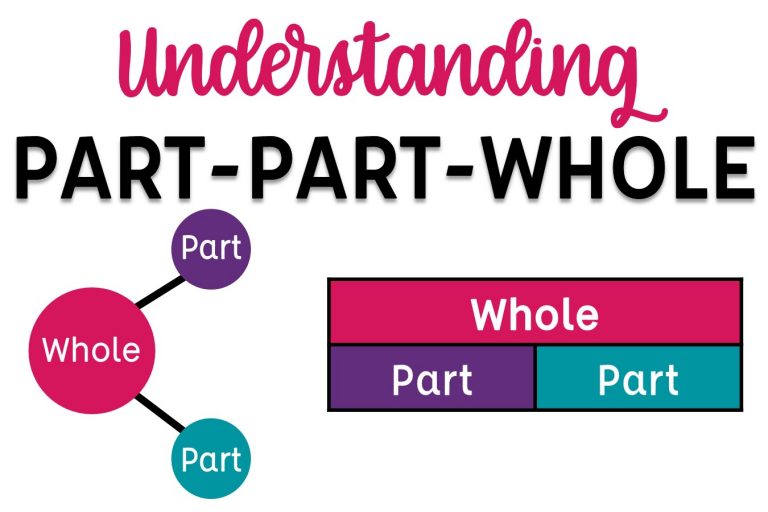
Teaching part-part-whole relationships is critical while teaching addition and subtraction. For students to build a solid understanding of addition and subtraction, they need to understand what each one represents. While helpful when working with equations with unknowns in all areas, it’s imperative that students have a solid understanding of addition and subtraction so they’re able to apply both skills in real world scenarios. Understanding part-part-whole is a much more effective strategy to teach for problem solving than keywords, though they still have their own place. Here’s a look at how you can apply part part whole in your addition and subtraction unit.
THE UNKNOWN
One of the first parts to teaching part part whole is the unknown; the question. Students should have a lot of exposure with unknowns of varying types- variables, question marks, blank lines, boxes, etc to build the understanding that they all represent the same thing. It’s imperative that the unknown is in varying positions- especially to the left of the equal sign ( x = 6 + 2) so students learn its meaning. The unknown should be identified as a WHOLE or a PART early on so they are able to later transfer their learning to word problems.
This is where keywords come in- students can use keywords to identify something as the “part” or the “unknown”. However, it always should come back to “part” or “whole” as that helps build the foundational understanding of the operations. Keywords should not be taught as the basis of understanding the problem and should not be a series of terms categorically memorized. However, they relate back to part and whole and can help students understand the context being presented. Read more in my post on Why Students Struggle with Word Problems.
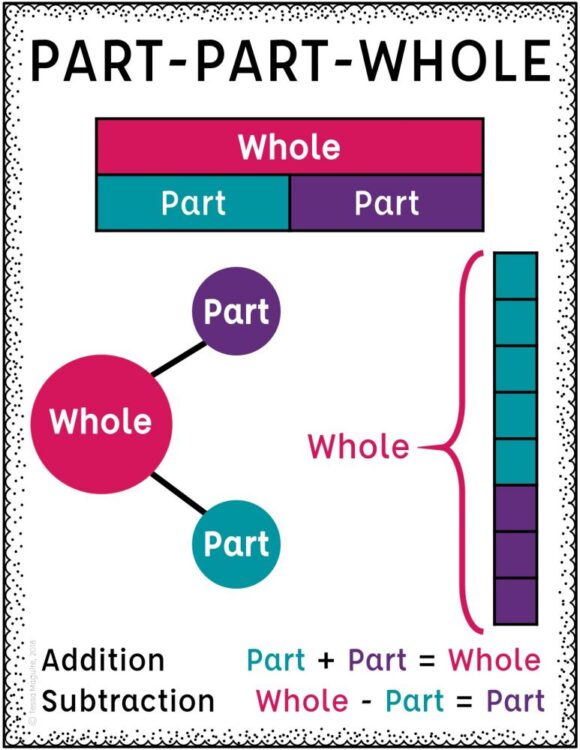
You can download the part part whole poster above as a pdf by signing up in the form below.
ADDITION IS WHOLE UNKNOWN
Addition is putting parts together to find the total, or whole. Children build this understanding by counting groups of objects together to find their total. Students explore sums using manipulatives and build their understanding of addition, and their facts as well, through hands-on explorations.
One of my favorite tools to model addition for students is this large, magnetic ten frame from Learning Resources. Because the magnets come in two colors, you’re able to represent both parts in the equation. I use these as models during lessons, but my students also love to use them when they’re working in centers or playing during Fun Friday. Ten-Frames are perfect visual models for part-part-whole because students can easily see that each color is a different part in the scenario.

I also created smaller versions of base ten frames for students using Scotch Expressions tape, cookie sheets, magnets, and colored dots. I divided each cookie sheet into four ten frames due to size, but one or two could easily be used on them. Each side of the magnet is a colored dot (the sides are different) and I put them in small containers in sets of 10. They are available for students to use during their independent work time to help them model and solve equations and can take more than one container if they need them for larger numbers. I got everything from Dollar Tree so while it took some time, it was not an expensive project, at all.
I also have a digital tens frame resource. It works through 10 with addition and subtraction. There are 16 total activities. Adding to 10, Subtraction from 10, Missing Addends within 10, and Subtracting within 10 activities are each provided in 4 different themes. You can take a closer look at my Digital Addition and Subtraction to 10 Tens Frames Activities below. You may also be interested in my blog post with 44 Free Tens Frames Activities.
Students can also use base ten blocks to help them find ways to make a sum. Locking cubes could also easily be used to practice the same skill. Students explore the related numbers that are the “parts” that make the “whole”. You can have a predetermined amount of cubes already separated, or have students grab a handful and explore the numbers that can be connected to make that number.
SUBTRACTION IS PART UNKNOWN
Subtraction is taking the whole and splitting into parts. This understanding is built in the same way as addition- through exploration with groups of objects. Giving students a group of objects to split into smaller parts helps build this understanding. The work with the base ten cubes or linking cubes above helps students see that the same total of objects can be split into parts of different sizes, and also that the two part sizes are inversely related.
Comparison problems are subtraction as the two parts are the known number and the number needing to be added to make the other number (the total). They find the difference between the numbers. “How many more” and “how many less” represent comparison problems. Ten frames are also great models for building comparison problems as students see how many more are needed to make the total.
I love using divided plates to work with part-part-whole. For subtraction, I place all of the manipulatives (M&M’s and Skittles are a bit hit!) in the large section of the plate and then move the set amount into one of the smaller parts to match the equation. You can also write on the plastic plates with dry erase markers and label the “parts” and the “whole”. The plates and any sort of counters you already have on hand are a perfect resource for students as they work with addition and subtraction independently during centers.
View this post on InstagramI love using these divided plates for working with part-part-whole. Plus M&M’s for the win!
A post shared by Tessa-Tales Outside Classroom (@talestessa) on
FACT FAMILIES REPRESENT PART PART WHOLE
Teaching fact families should also be rooted in part part whole. Fact family triangles help students visually see part and whole relationships. When teaching fact families I use the house representation pictured below. I always put addition and subtraction equations as related to part and whole in the triangle for the roof to help keep students focused on the relationship between the two and help them understand fact family triangles.
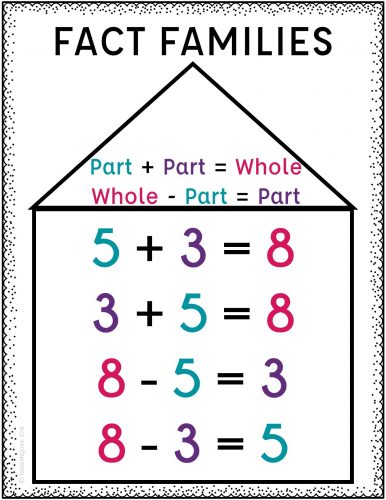
You can receive the image above as a pdf poster for displaying by signing up in the form below.
When we work with fact families we also use our arms to build the triangle and help add kinesthetic movements into our learning. We put our hands together above our heads for whole and put our arms out to each side for each part (like the triangle above). The kinesthetic movements help students retain the learning and it gives them an easy tool to use later when needed.
PART-PART-WHOLE PRINTABLES
There are many different models for part-part-whole relationships. Two of the most common are bar models and number bonds. I find bar models to be the most helpful when working with word problems as students can visually see the parts relating to the whole and which portion is the unknown. Number bonds, in my opinion, are more relevant when looking at facts for a sum and building understanding of number relationships and fact families. Ten frames are also great tools to help students visualize part and whole relationships especially as students are working with numbers to 10 and numbers to 20.
I have put together 12 pages of printables that you can use to work with part-part-whole models with counters, base ten pieces, locking cubes, or whatever else you have in your classroom. 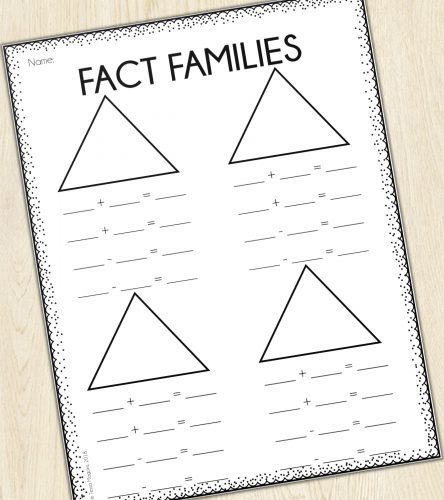
There are pages for number bonds, ten frames, and fact families. The pages include practice for both addition and subtraction. The equal sign is on the left of the equation on some of the pages. Two half sheet pages are also included for work in centers. All of the pages are black and white so you can print on colored paper and laminate, or print and use right away. 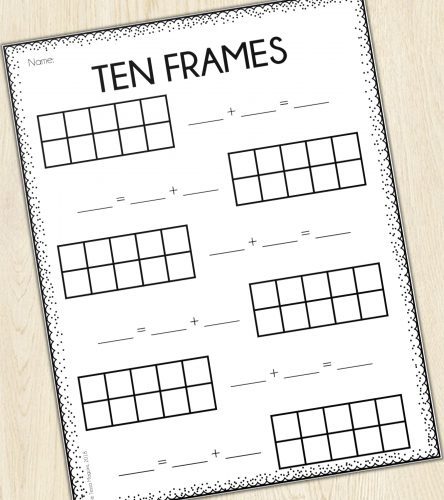
You can receive all of the part-part-whole posters and printables showcased here by completing the form below. Once you confirm your email they’ll be sent straight to you!
SEND IT TO MY INBOX!
Submitting this form will send the posters and printables straight to your inbox. You’ll get some 1st grade specific resources emailed to you as well!
Next step: Confirm!
You should have received an email to confirm your settings. If you don’t see the email right away, search Tales from Outside the Classroom. Then be sure to mark me as a safe sender so you find every email right away!
Once you confirm, the email with your posters and printables will be sent straight to you!
WORD PROBLEMS
Students’ understanding of addition, subtraction, and part-part-whole is evident through their understanding of word problems. Through story problems, students demonstrate they can use the context to determine the operation being used and can apply it independently. To specifically practice part-part-whole scenarios, I have these Part-Part-Whole Digital Word Problems for 1st grade. They practice addition and subtraction within 20 in real-world contexts. Students read the word problem, build an equation, and solve using the built in number lines and tens frames to model the scenario.
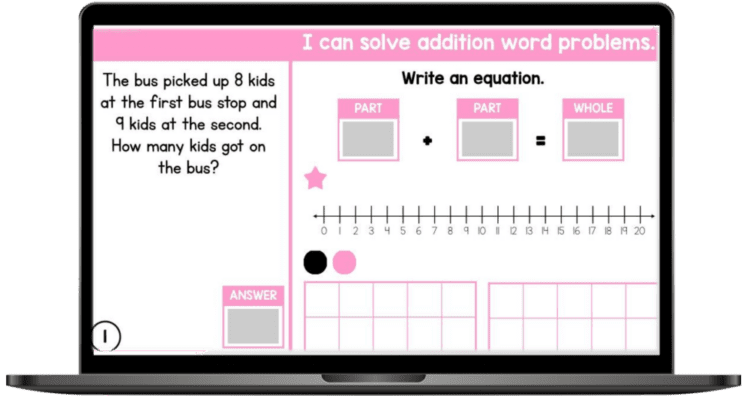
You can take a closer look at my Part Part Whole Word Problems by for 1st grade. 4 different problem types are included: a set for identifying the unknown as a part or a whole; a set for whole unknown; a set for part unknown; and a set for both parts unknown. They are created for use in both Google Slides and SeeSaw.
I also have a free version for Adding 3 Numbers. Each of these scenarios are presented in part-whole relationships. The Adding 3 Numbers Word Problems set gives you a feel for how the Part-Part-Whole set is configured.
In addition to practicing specific problem types when that’s the focus of our studies, it’s important to give students practice outside of that. I do a word problem of the day outside of my math curriculum to ensure students are experiencing varying problem types and spiral through the year’s skills instead of working with one skill at a time. This helps students not just rely on the “content of the week” while solving; they truly have to use the context to solve.
My 1st Grade Word Problem of the Day come with two problems per page. There are two different formats: consecutive pages side by side and the same page duplicated side by side. My students have their story problem in their daily binder so I prefer to have them consecutively. If you want to duplicate them for students then the alternate format might be best for you. Through daily work with the word problems students complete part-part-whole tables, start-change-end tables, write equations, model problems, and write their answers in complete sentences. Students build their deep understanding of the 1st grade math centers through the daily practice and spiral. Students work with different problem types and build a strong understanding of part-part-whole and addition and subtraction. You can see the entire yearlong bundle in my TpT shop 1st Grade Word Problem of the Day or clicking the image below. The bundle is broken into month long sets and can be purchased separately.
For an in-depth look at all of the formats for addition and subtraction word problems, in addition to part-part-whole, check out my Addition & Subtraction Word Problem Scenarios blog post.
START-CHANGE-END WITH ADDITION & SUBTRACTION
In addition to teaching part-part-whole with my students, I also teach start-change-end with addition and subtraction. In real world scenarios, addition and subtraction is either (or sometimes both) start-change-end or part-part-whole. I teach both explicitly with my 1st and 2nd graders and we talk about our word problems in relation to both. You can read about start-change-end problem types in that post.
MULTIPLICATION & DIVISION WITH PART-PART-WHOLE
As a third grade teacher, when I introduce students to multiplication and division I relate it back to part-part-whole. We change the “part” to “# of groups” and “# in each group”. If students have a solid understanding of parts and whole they understand the multiplication and division relationship much more easily when it’s introduced and connected back to part and whole. When working with multiplication and division word problems, the focus is on whether or not the whole is unknown to determine which operation is being used. The four operations can be identified in word problems when students identify the unknown and given information as they relate to part-part-whole and groups.
ADDITION & SUBTRACTION FACT FLUENCY
Once students have a solid understanding of part-part-whole and start-change-end scenarios, we continue to build their addition and subtraction mastery and fact fluency through ongoing play and practice. I love to use games and centers to build my students’ addition and subtraction fact fluency because students don’t feel the stress they do in timed scenarios. They are able to use manipulatives like number lines and tens frames while also working through an engaging activity. I’ve highlighted some of my favorite addition and subtraction fact practice resources below.
I have other math posts perfect for 1st grade teachers linked below. Just click on the images to head to the posts.
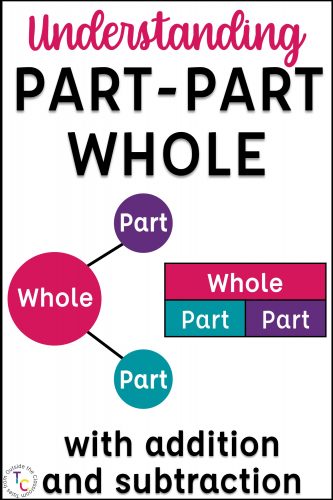
Newsletter Sign Up
Signup for my weekly-ish newsletter. I send out exclusive freebies, tips and strategies for your classroom, and more!
Please Read!
You have successfully joined our subscriber list. Please look in your e-mail and spam folder for Tales from Outside the Classroom. Often, the confirmation email gets overlooked and you're night signed up until you confirm!

Hi! I’m Tessa!
I’ve spent the last 15 years teaching in 1st, 2nd, and 3rd grades, and working beside elementary classrooms as an instructional coach and resource support. I’m passionate about math, literacy, and finding ways to make teachers’ days easier. I share from my experiences both in and out of the elementary classroom. Read more About Me.









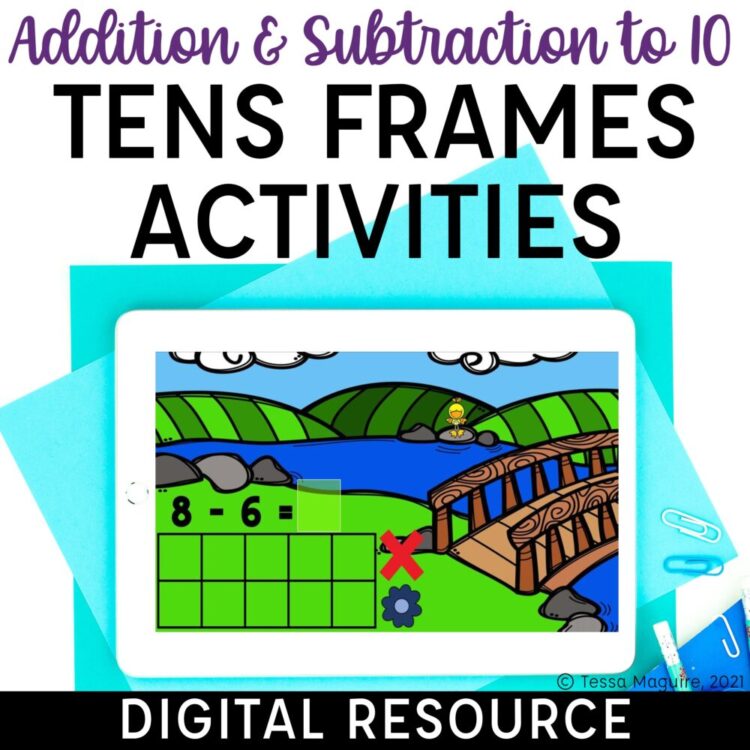


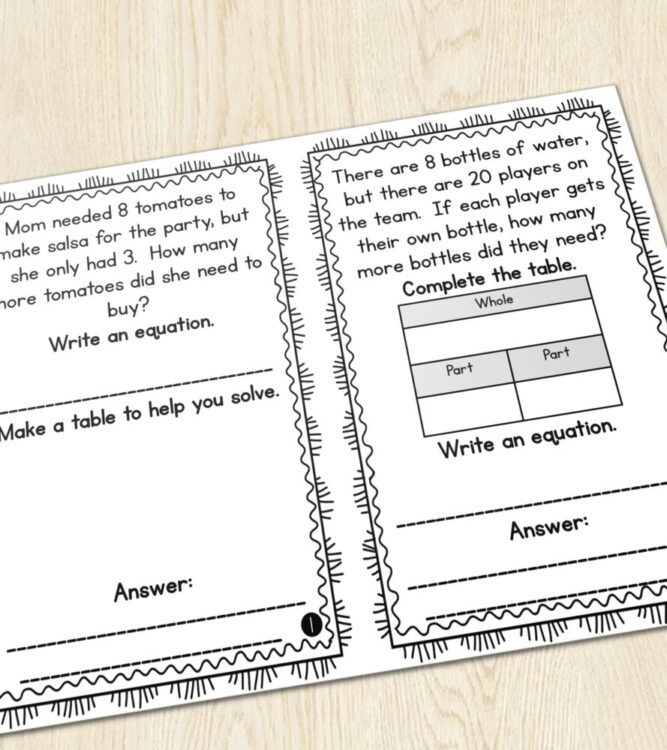
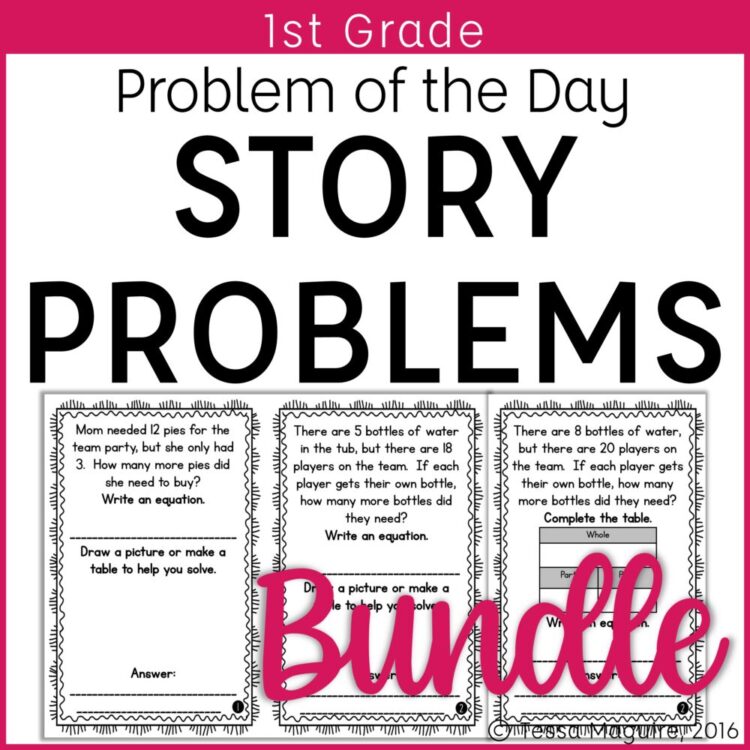
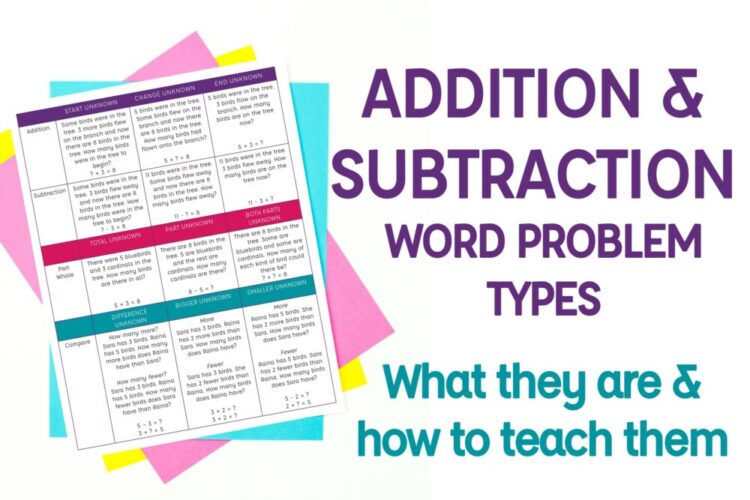
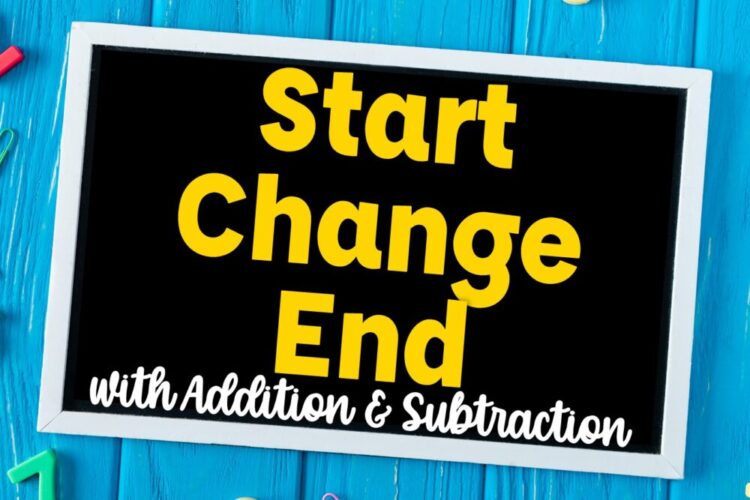
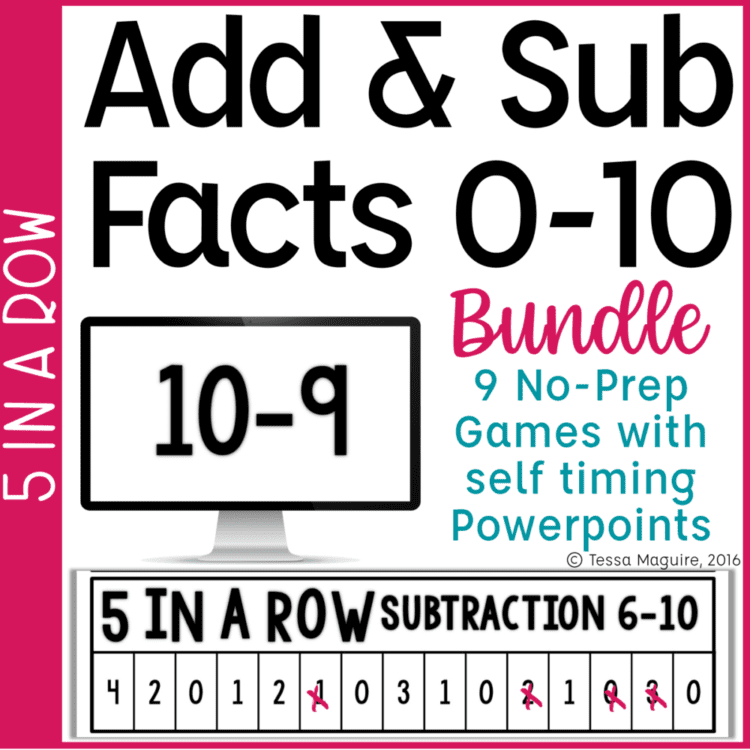

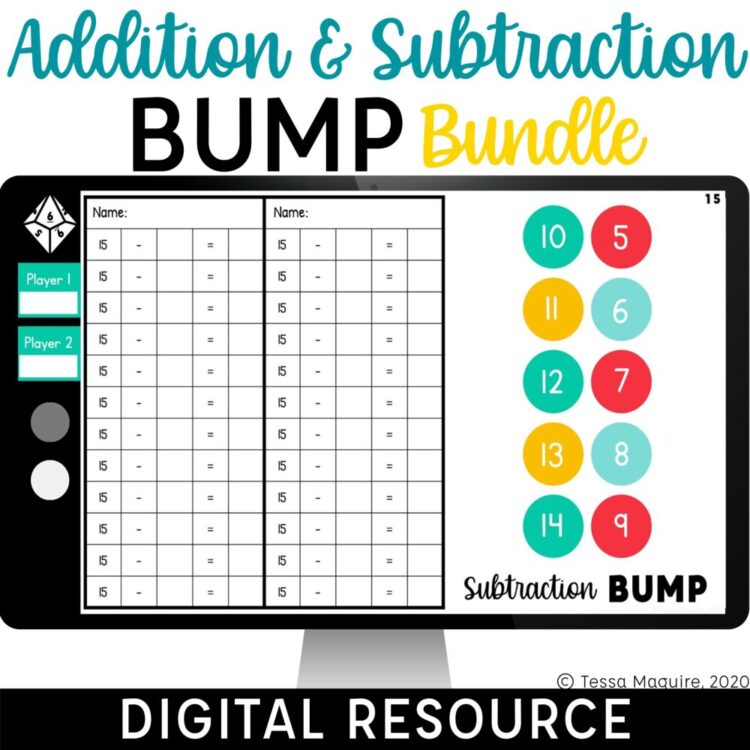
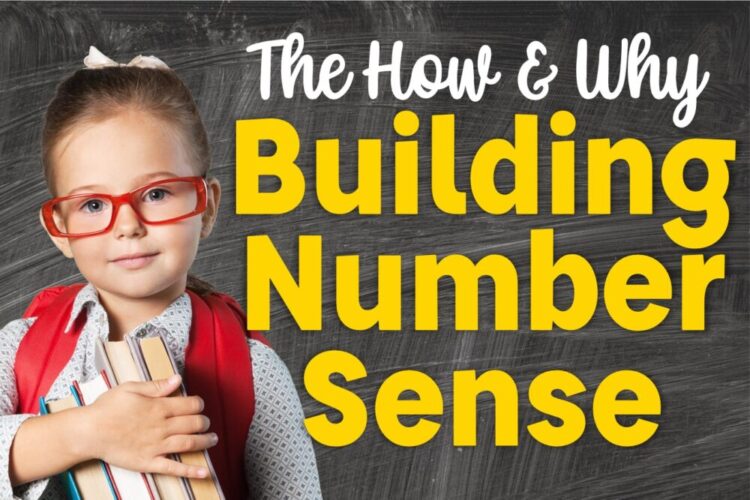
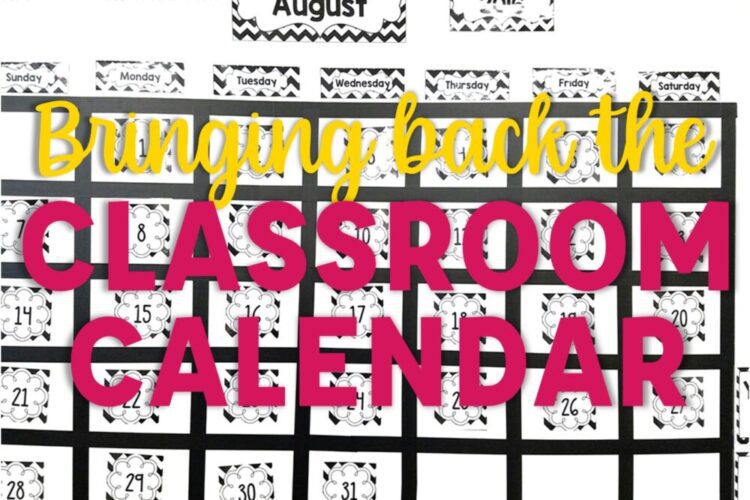
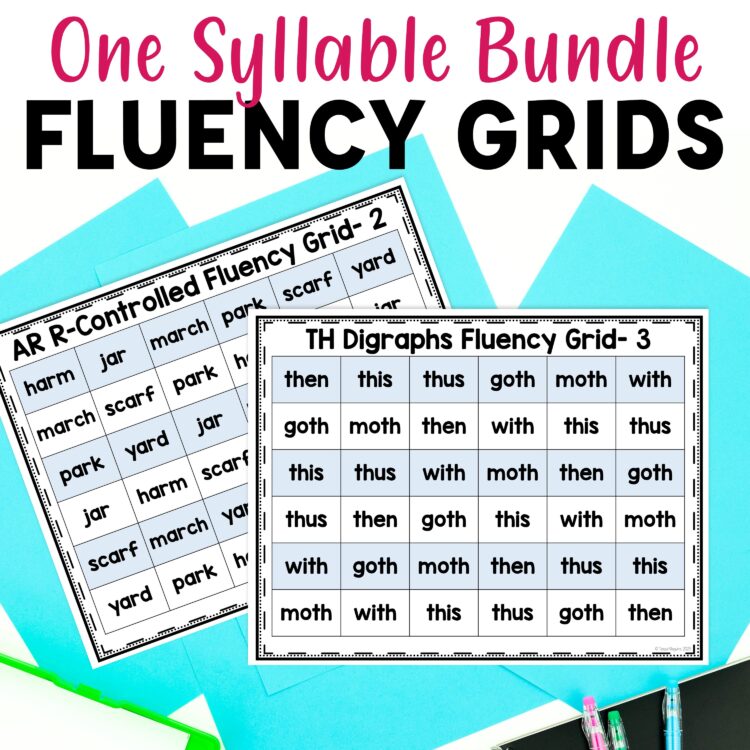
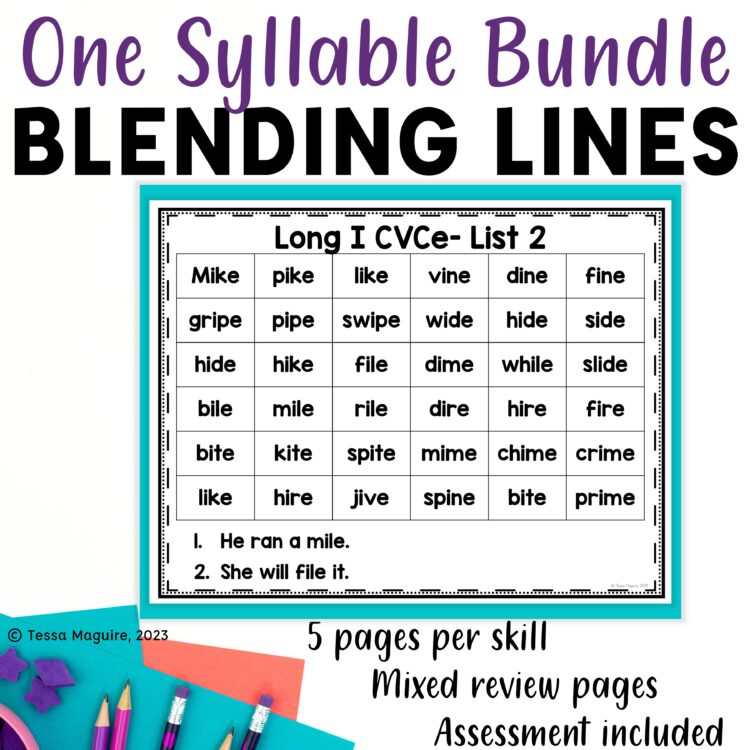
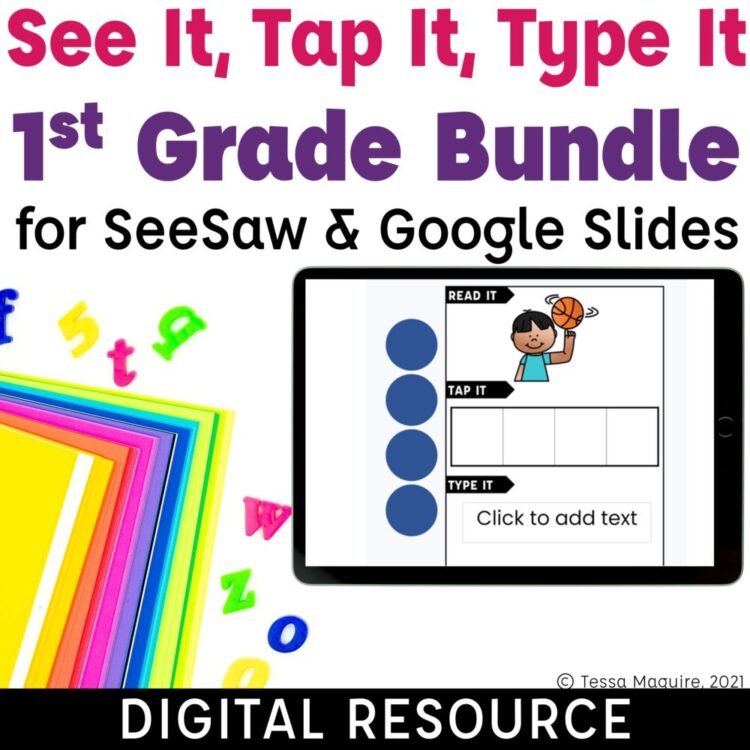



8 Comments
I teach 3rd grade and was wondering if you have a poster for multiplication/division like what you described above. My students are having trouble with the part/part/whole concept. I am going to print the poster for addition/subtraction and it would great if I had a mult/div poster to put beside it to see the correlation. I teach STARS class with a lot of ESOL students and it would be helpful to have both posters side by side.
Thank you so much!
I don’t (yet) since it’s not quite as simple since it’s with groups instead of parts. Are you looking for something similar to my anchor chart?
Hi! I tried to click on the link for your part/part/whole worksheets. It keeps giving me the anchor charts that you created. Is there any way to get just the worksheets? Thanks so much!
Thanks for letting me know. It’s fixed now.
Thank you very much for the posters and printables! Your hard work and generosity are much appreciated.
Thank you for poster and printable.
I’ve subscribed, but am still struggling to understand how to download part part whole poster!
Hi Amelia, you signed up for my general newsletter rather than the Part Part Whole sign up that sent it to you. I manually signed you up and you should have received it just now.